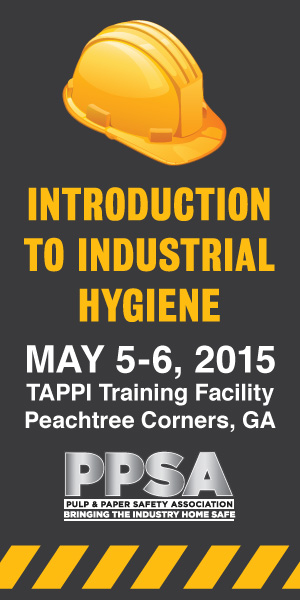 |
||||||||
| April 15, 2015 | ||||||||
| Rick's Tips - Converflo Headbox and Dump Valve |  |
|||||||
|
· Subscribe to Ahead of the Curve · Newsletters · Ahead of the Curve archived issues · Contact the Editor

|
Emissions drop at UK Paper Mills in 2014 (Editor's Note: Based on a CPI press release of April 13, 2015) Figures released by the European Union Emissions Trading System (EU ETS) confirm a continued fall in emissions from UK paper mills. Allowing for changes in production levels, the figures show that the amount of EU ETS reported carbon dioxide emitted by UK paper mills (per tonne of production) has fallen by a third in just seven years—from 0.64 tonnes CO2 per tonne of product to 0.42 tonnes. HOW HAS SUCH A BIG CHANGE BEEN DELIVERED? As well as these incremental changes, UK mills are big users of highly efficient Combined Heat and Power (CHP) plants, making much of their own electricity and using heat wasted in conventional power generation. Since 2008, a number of mills have invested in new CHP, with all sector CHP now being either gas or biomass powered; all old coal CHP plants have now been decommissioned. This investment in new gas and biomass powered CHP has seen hundreds of millions of pounds invested by the sector, resulting in greatly reduced EU ETS emissions. POLICY FAILINGS Equally serious, is that EU ETS now provides zero free allocation for electricity generation, acting as a barrier to new CHP and a penalty on existing plant. While the UK Government has sought to address this issue by offering compensation to some, but not all, installations, such compensation is guaranteed only in the shorter term and misses a real opportunity to incentivize on-site power generation. Said CPI Director General, David Workman, “These figures show that UK paper mills are more than playing their part in reducing emissions and helping the UK reach climate change related targets. However, Government must also play its part by setting long-term stable policies to ensure that UK installations can remain internationally competitive while continuing to de-carbonize. We look forward to working with a new Government to take forward the sector 2050 Roadmap just published. Don’t forget that more than half of the paper used in the UK is made elsewhere, with associated emissions not being counted in the UK. We’d much rather see the paper used in the UK being made in highly efficient UK mills, providing jobs and creating wealth here. Since 2008, our production has fallen by around 600,000 tonnes. Nonsensically, emissions associated with imported paper simply aren’t included by Government in UK emissions data.” For additional information, contact Emma Punchard, Director of CPI Communications at; epunchard@paper.org.uk. A summary of UK sector emissions can be found at: www.paper.org.uk/news/news.html. The Confederation of Paper Industries (CPI) is the leading trade association representing the UK’s Paper-based Industries, comprising recovered paper merchants, paper and board manufacturers and converters, corrugated packaging producers, and makers of soft tissue papers. It represents an industry with an aggregate annual turnover of £6.5 billion, 25,000 direct and more than 100,000 indirect employees. See learn more about the UK’s Paper-based Industries visit: www.paper.org.uk. For additional information, contact Emma Punchard, Director of CPI Communications at: epunchard@paper.org.uk. Now that you are Ahead of the Curve, stay there by joining TAPPI. |
|||||||
 |
||||||||

